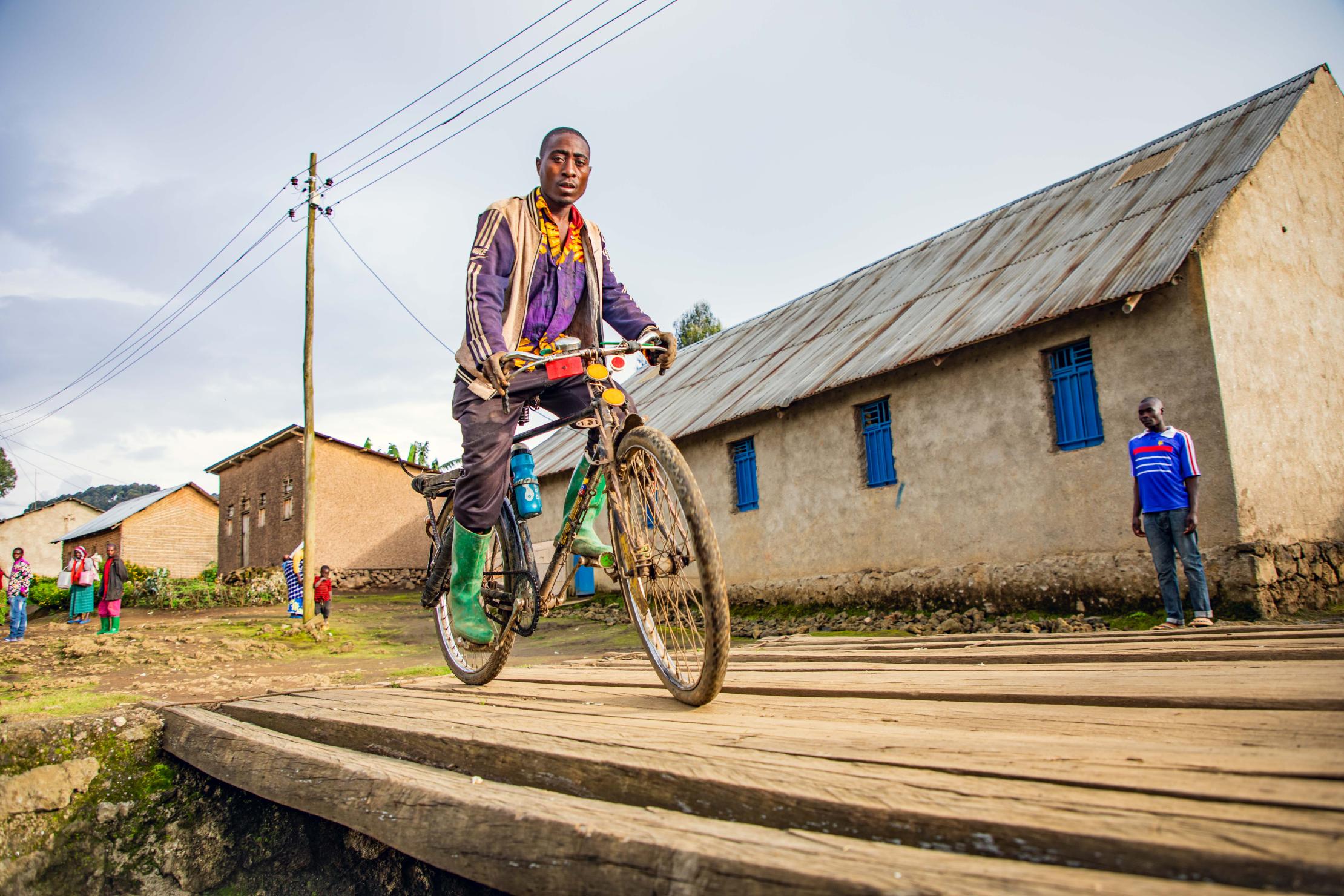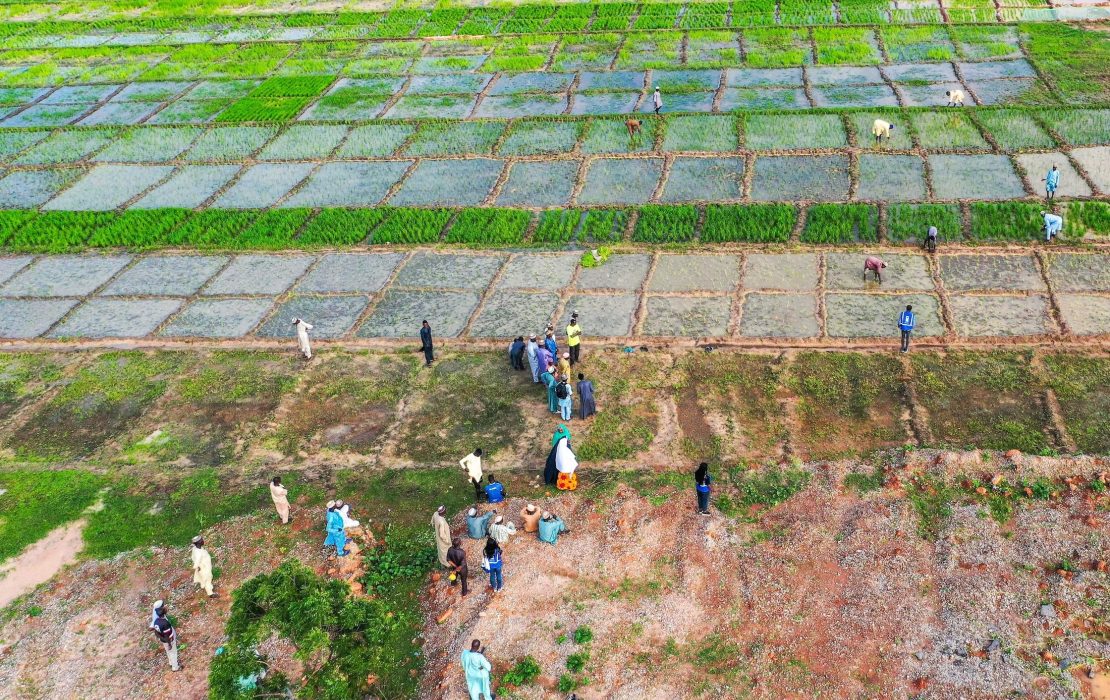
Photo: Mucyo Serge/UNDP Rwanda
We hear about the impacts of climate change every day. Following the hottest year since records began, we know time is running out to take swift and decisive action to cut down our greenhouse gas emissions as much as possible.
But there’s a caveat to our climate action efforts that may not be immediately apparent. These efforts can influence our cost of living, lead to job displacement and loss of income, or pose threats to energy and food security. Moreover, they risk widening the socio-economic divide between developed and developing nations.
Perhaps you have been following the widespread farmer protests across Europe on the new environmental regulations meant to help curb greenhouse gas emissions from agriculture. Or perhaps you're in a country abundant in resources like lithium and cobalt and are worried about how the global race to secure these minerals will impact your community. Maybe you’ve heard of the Carbon Border Adjustment Mechanism taking effect in the European Union last year and the concerns raised by some of the countries impacted. And for the ambitious young graduates out there, pondering the future job market, you might be anxious about your chosen career being obsolete in the future.
No matter where your interests or concerns lie, the common thread through these stories is the need to understand the socioeconomics of climate action through an equity and justice lens. The challenges we face in the climate realm are not just environmental but deeply intertwined with issues of fairness and economic justice.
While we unequivocally need bold and ambitious climate action to limit global warming to 1.5°C, we also have to understand the impacts of this transition and make sure that we are minimizing the losses and maximizing the benefits. This is the backbone of just transition: ensuring that every person, society and country benefits from the opportunities presented by constructing future economies in line with the 1.5°C goal.
But how do we do that? Here are five steps we can take to make a just transition happen:
1. Integrate just transition principles into key climate frameworks.
We must ensure Nationally Determined Contributions (NDCs) and Long-Term Low Emission Development Strategies (LT-LEDS) integrate just transition approaches.
The establishment of a dedicated work programme on just transition at COP28 in Dubai was a critical advancement in this sense. The vigorous discussions leading to this initiative highlight its complexity and the imperative for international cooperation based on the principle of common but differentiated responsibilities.
2. Identify what we are transitioning towards and away from.
With the NDCs and LT-LEDS as pivotal climate instruments of the Paris Agreement, each country must outline their vision for green economic growth and sustainable development in line with their unique circumstances and using the 1.5°C goal as a guiding star.
This is now more important than ever as countries are preparing for the next revision cycle of their NDCs, due to be finalized by early 2025.
3. Understand the transition impacts.
We have to understand how the green transition will affect economies, societies and individuals, both positively and negatively.
Transition impacts vary significantly depending on country and society. For instance, energy transition poses special challenges in Africa, especially for highly indebted countries, low-income households and other vulnerable groups. One of the primary issues is the risk of creating stranded assets within the fossil fuel sector, which can lead to significant financial losses for countries and investors. This is particularly concerning for oil and gas producing countries in Africa, where such assets form a substantial part of national wealth and economic stability. The transition to renewable energy, while necessary for environmental and health reasons, must therefore be planned to mitigate economic disruptions and enhance energy access.
In Small Island Developing States, the global race for energy transition introduces distinct vulnerabilities due to their dependence on imported fossil fuels and constrained economies of scale. This leads to elevated energy costs, which in turn impact key economic sectors, such as tourism. The latter is particularly affected by aviation and the expenses involved in transitioning to low-carbon fuels.

A group of workers being retrained on installing solar panels. Photo: Xhemail Sllovinja/UNDP Kosovo*
In agriculture and forestry, the push towards regenerative agriculture, reforestation and afforestation demands that farmers acquire new knowledge and skills, necessitating reskilling, training and financial means to diversify farm operations and products. This is compounded by the rising cost of production brought on by environmental regulations related to the use of harmful pesticides and fertilizers.
Moreover, the global shift towards decarbonization and renewable energy is increasing demand for lithium and other critical minerals that are predominantly found in a few, mostly low-income countries. The rush to obtain these materials could exacerbate environmental degradation and social and economic inequalities, affecting the rights of Indigenous Peoples and local communities. We must ensure that new mining operations implement strict measures to protect human rights, promote environmental sustainability and ensure social equity.
4. Be on the lookout for blind spots.
Some transition impacts may be evident. But others remain hidden, presenting significant blind spots, particularly on an international scale. For example, if not managed carefully, the global race for critical minerals could lead to increased geopolitical tensions. Or measures implemented within one country could impact prices in other countries, affecting their economies. This global inter-dependence highlights that a lot is at stake.
Measuring and managing these diverse and complex transition impacts is essential for pursuing a just transition that benefits all, marking a vital pathway towards achieving our global climate goals in a manner that is fair and inclusive.
5. Establish conditions and processes to manage the transition.
We must ensure that everyone receives their fair share of benefits. Conducting stakeholder consultations to bring all affected parties into climate action is crucial, ensuring a shared vision of what just transition means. This is also an important step in garnering public support for climate action. Another key step is developing policy and regulatory support. Moreover, capacity building and financial support are essential to empowering stakeholders to become agents of change and integral parts of the economies of tomorrow. Economic diversification is also crucial, yet many developing countries face constraints due to limited resources and capacities. Proper investment is essential to overcoming these challenges.
As UNDP, we are supporting countries around the world to embed just transition principles into their climate action strategies. With the revision cycle of NDCs coming up in 2025, we will continue to guide countries on a path to sustainability that fosters inclusivity, equity and resilience.
So far, UNDP's Climate Promise has supported more than 50 countries in integrating just transition principles into their NDCs and LT-LEDS. Serbia, for example, has developed a just transition roadmap in light of its European Union accession negotiations and energy transition needs. In Viet Nam, UNDP is enhancing governance frameworks to facilitate a just energy transition in the coal sector. With UNDP support, Zimbabwe and Nigeria have integrated just transition assessments into their NDCs and LT-LEDS, while Belize is empowering its small- and medium-sized enterprises through greening modules and capacity building initiatives. In Pakistan, UNDP is supporting the creation of a green careers launchpad to facilitate enhanced awareness and support for youth looking to pursue green careers.
The challenges of climate change, development and social inequality converge at the crossroads of just transition. It represents not merely an optional approach but a necessity for crafting the economies of the future. Just transition is a call to action for global solidarity, ensuring that our collective march towards sustainability leaves no one behind.
***
Delivered in collaboration with a wide variety of partners, UNDP’s Climate Promise has supported over 120 countries to enhance and implement Nationally Determined Contributions (NDCs) under the Paris Agreement. Pledge to Impact is generously supported by the governments of Germany, Japan, United Kingdom, Sweden, Belgium, Spain, Iceland, the Netherlands, Portugal and other UNDP core contributors. This programme underpins UNDP’s contribution to the NDC Partnership.
To learn how the world is faring on just transition, check out our report: How Just Transition can help deliver the Paris Agreement.
* References to Kosovo shall be understood to be in the context of Security Council Resolution 1244 (1999).


